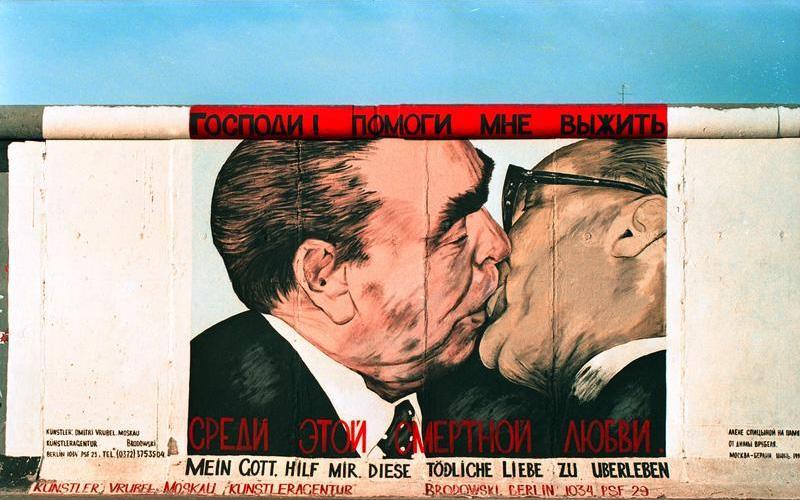Post-War Art
In their article What We Owe Postwar German Artists, From Joseph Beuys to Gerhard Richter, Alex Allenchey shows that while art could vary wildly between the now divided Berlin, most art had a theme of confronting what Germany had done during the war and a sense of grief and regret. Several movements would appear in German art, from the socialist realism in the Eastern part of the city to Neo-expressionism to conceptual art. Socialist realism is a movement that largely focused on showing the more realistic but nonetheless idealistic view of life in the USSR. (Tate Museum)
While now closed, you can see part of an exhibit on art in the GDR (German Democratic Republic, the name that East Germany was given by the USSR) put together by the Apollo art magazine here. Despite what may seem like a more bleak time for the people living there, you may notice a great amount of diversity in the art styles used in the pieces featured.
Perhaps one of the most popular bits of graffiti art from the Berlin Wall can be seen in the second image on this page, that being Dmitri Vrubel's My God, Help Me to Survive This Desperate Love. It depicts a fraternal kiss between General Secretary of the USSR Leonid Brezhnev and then-leader of the GDR Erich Honecker. In an interview 25 years after painting it, Vrubel did explain why he chose to paint what he did: "But I wanted to paint specifically on the Berlin Wall and specifically Brezhnev and Honecker’s kiss. In this painting, there’s one German and one Russian, and the Berlin Wall is about the same thing but in reverse: here [in the painting], there’s total love, while the Berlin Wall separates two worlds..." (Borzenko)
In the Western part of the city, art would vary far more wildly. Take a look at the previous page and the picture of the Berlin Wall, keeping in mind that only people on the west side could paint on it. You'll notice looking at the photo that far more different styles, colors, and designs are used. This could possibly be attributed to how many cultures and groups made up West Berlin; it was occupied by American, French, and British citizens and forces. While some movements like the ones mentioned before would come from West, one of the greatest impacts of art from Germany and one that highlights its national makeup and identity in that postwar era remains the Berlin Wall.

